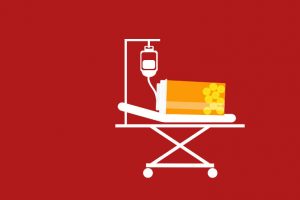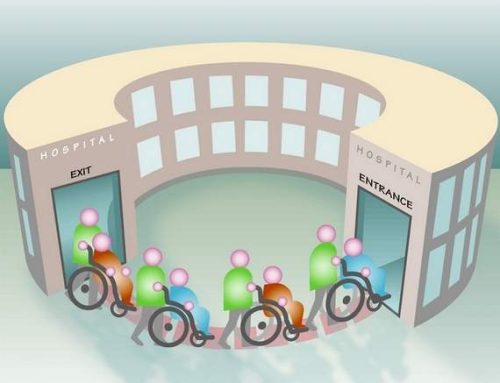| Opioid dependency care management marks one of many challenges of behavioral health integration (BHI) for payers and providers. Learn more about the opioid epidemic in our latest blog. BHM Healthcare Solutions understands the complexities for all sides of BHI. Ask how we can help your organization. Click HERE. |

Every day, headlines detail the casualties of the nations surge in heroin and prescription painkiller abuse: the funerals, the broken families and the patients cycling in and out of treatment. Now, a new study sheds light on another repercussion how this public health problem is adding to the nations ballooning health care costs and whos shouldering that burden.
The research comes as policymakers grapple with how to curb the increased abuse of these drugs, known as opioids. State legislators in New York, Connecticut, Alaska and Pennsylvania have tried to take action by adding new resources to boost prevention and treatment. In addition, President Barack Obama laid out strategies last month intended to improve how the health system deals with addiction.
Published Monday in the journal Health Affairs, the study measures how many people were hospitalized between 2002 and 2012 because they were abusing heroin or prescription painkillers, and how many of them got serious infections related to their drug use. It also tracks what hospitals charged to treat those patients and how the hospitals were paid.

The findings? Hospitalizations related to use and dependence on opioids have skyrocketed, from about 302,000 in 2002 to about 520,000 a decade later. During the same time period, the number of these patients who had dangerous infections, like endocarditis or septic arthritis, increased from about 3,400 to 6,535. Those tallies are likely higher now, given the continued growth in opioid abuse, said Matthew Ronan, a hospitalist at the Veterans Health Administration in Boston, an instructor at Harvard Medical School and the studys primary author.
Meanwhile, those same patients are becoming more expensive to treat. Hospitals charged almost $15 billion in 2012 for opioid-related inpatient care more than double what they billed in 2002, even after accounting for inflation. More than $700 million of that went to treating patients with the associated infections. And many were uninsured or on Medicaid, the federal-state health insurance program for low-income people.
Were certainly seeing the bad outcomes of IV drug use, whether thats death or hospitalization, Ronan said. Its a pretty destitute population and a population that doesnt have a lot of resources. You can only imagine that the bills are going to be huge.
The Opioid Epidemic Is Continuing To Plague America
Opioid overdoses killed more than 28,000 people in 2014, the most recent year for which the Centers forDisease Control and Prevention has public data. That was an all-time high. Experts say increased availability of drugs like heroin and prescription painkillers is driving the problem.
The findings add another layer to efforts to combat addiction, said Wilson Compton, deputy director of the federal National Institute on Drug Abuse. It is already a public health matter, he said, and this research makes the case for a public cost concern, too.
Demographically, theres a fair bit of overlap between people who are on Medicaid and those who abuse opioids, Compton noted. So its not surprising this program shoulders the burden of treating those patients when they get sick. But as more people become eligible for Medicaid through the federal health law that burden could easily grow, he noted.
Its tax dollars going to address this issue, said Compton, who wasnt involved with the study. By treating it more effectively and helping prevent these cases, we might be able to save money for all of us.
Those savings would only be a fraction of health care spending overall, Ronan noted. But being more proactive may help to prevent some of those things from happening, he added.
Plus, the findings probably underestimate just what opioid abuse costs, Ronan said. For instance, researchers didnt take into account what it costs to look after patients once they leave the hospital, though the ones with serious infections usually need follow-up care in monitored settings such as skilled nursing facilities or through home care.
They often require longer-term care more involved care, he said. The cost in infection doesnt end when theyre discharged. The $700 million is just the inpatient side, just the start of the cost.
The researchers didnt break down which hospitals are most likely to treat patients based on their opioid abuse. But both Ronan and Compton noted that heroin and prescription painkiller abuse is more common in particular areas: the Southwest, the Northeast and rural areas like Alaska and Appalachia.
Things like needle-sharing programs and promoting better hygiene might at least reduce the risk of infection, Ronan said, even if they dont undo addiction itself.
Importantly, Compton said, this research highlights the need for policy initiatives that curb opioid addiction strategies that promote better addiction treatment and make these drugs harder to access.
The reason people are engaging in high-risk abuse that is putting them at the risk for infection is the underlying opioid addiction. So better treatment, and getting people into treatment, is a key approach, Compton said. I dont think this study changes that, but it reinforces the need. Be sure to stay ahead of the curve when it comes to news about the opioid epidemic and emerging policies.
Originally posted by Kaiser Health News. KHN a national health policy news service that is part of the nonpartisan Henry J. Kaiser Family Foundation.






